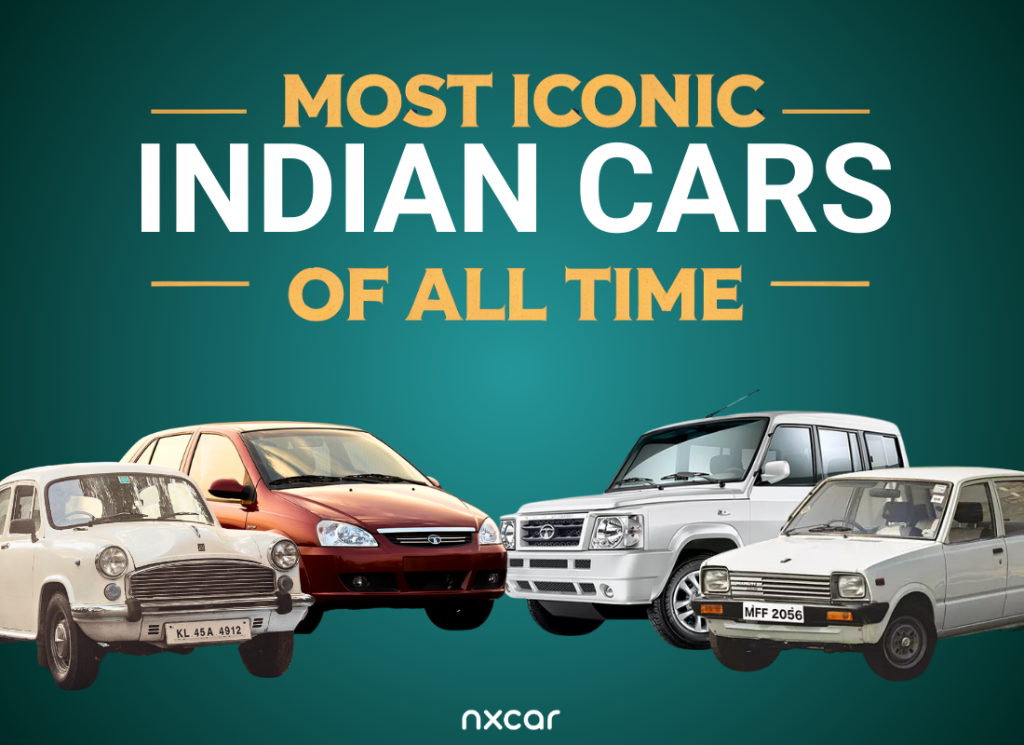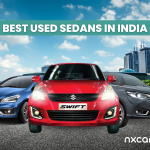India’s automotive history is more than just a timeline of vehicles—it’s a saga of transformation, innovation, and economic progress. Yet, in an era where cars feel increasingly uniform, something vital is slipping away: character. The most iconic cars of India were more than just modes of transport; they were cultural and economic powerhouses that shaped industries, created jobs, and redefined mobility for millions.
Imagine a time when the Hindustan Ambassador wasn’t just a car but a symbol of power, ferrying politicians and bureaucrats across the nation. The Maruti 800 didn’t just put India on wheels; it revolutionized the middle-class dream and sparked an industrial boom. The Premier Padmini was more than a stylish sedan—it was the backbone of Mumbai’s famed kaali-peeli taxi fleet, sustaining livelihoods for decades. These legendary machines didn’t just drive on Indian roads; they fueled economic growth, nurtured the domestic automotive sector, and paved the way for global manufacturers to invest in the country.
As modern cars prioritize efficiency over emotion, it’s worth revisiting the most iconic Indian cars of all time—vehicles that not only carried people but also carried the aspirations of a growing nation. Let’s journey through their stories and celebrate the legacy they left behind.
Mahindra Scorpio

Few vehicles have left a mark on India’s automotive landscape quite like the Mahindra Scorpio. Launched in 2002, this rugged SUV didn’t just put Mahindra on the map as a serious passenger carmaker—it revolutionized the country’s SUV segment. With its bold stance, muscular design, and go-anywhere capability, the Scorpio became an instant favorite among urban adventurers, off-road enthusiasts, and even government fleets.
Before the Scorpio, Mahindra was primarily known for utilitarian jeeps. This model changed everything. It was the first indigenous SUV developed entirely in India, proving that homegrown engineering could compete with global giants. Its success propelled Mahindra into the mainstream passenger vehicle space, making it a dominant force in the Indian SUV market.
Over the years, the Scorpio has sold over 8 lakh units, consistently ranking as one of India’s best-selling SUVs. It also pioneered features in its segment, including micro-hybrid technology and a cutting-edge mHawk diesel engine. The Scorpio’s influence extends beyond Mahindra—it helped shape India’s obsession with SUVs, paving the way for a market now dominated by high-riding, powerful machines.
With an enduring legacy spanning two decades, the Scorpio rightfully earns its place among the Most Iconic Indian Cars Of All Time, symbolizing resilience, power, and homegrown success.
Tata Indica: India’s First True Indigenous Car

At a time when India’s car market was dominated by foreign players and aging models, the Tata Indica arrived as a game-changer. Launched in 1998, it was the first passenger car designed and manufactured entirely by an Indian company. With its spacious interiors, fuel-efficient diesel engine, and affordable pricing, it struck a chord with middle-class families and fleet operators alike.
For Tata Motors, the Indica was more than just a car—it was a statement of intent. It proved that India could develop world-class automobiles without foreign collaboration. Within a year of its launch, the Indica became the best-selling hatchback in the country, a feat unheard of for a newcomer. By the mid-2000s, it had sold over 1.5 million units, making it one of the most successful models in Indian automotive history.
The Indica’s success not only solidified Tata Motors’ position in the passenger car segment but also paved the way for future innovations, including the Tata Nano and Tiago. More importantly, it inspired a wave of indigenous manufacturing, encouraging Indian automakers to think beyond licensing and imports. Today, its legacy remains intact, earning it a well-deserved place among the Most Iconic Indian Cars Of All Time.
Tata Sumo: The Workhorse That Defined a Generation
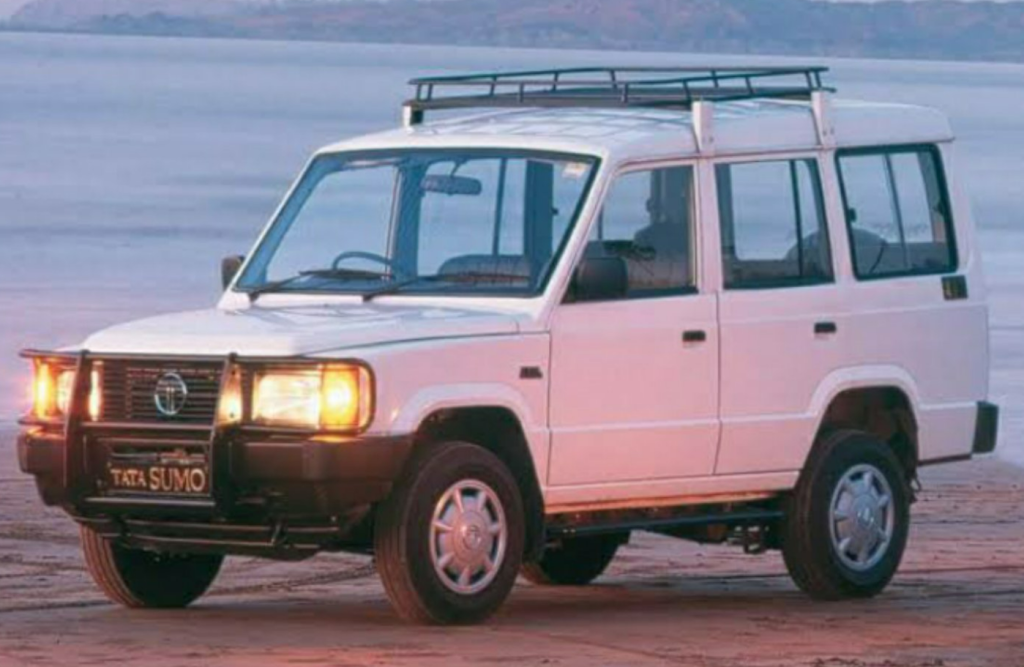
Rugged, reliable, and nearly indestructible—the Tata Sumo was more than just an SUV; it was a phenomenon. Launched in 1994, this sturdy people-mover revolutionized India’s utility vehicle segment, offering a perfect blend of durability and practicality. Built to withstand the toughest terrains, it quickly became the go-to choice for government agencies, army convoys, and large families alike.
The Sumo was a milestone for Tata Motors, marking its foray into the passenger vehicle space. With a powerful diesel engine and a no-nonsense design, it catered to both urban and rural markets. In just three years, Tata Motors sold over 100,000 units, making it one of India’s fastest-selling utility vehicles at the time.
Beyond its commercial success, the Sumo shaped India’s automotive landscape by proving that homegrown automakers could build robust, high-capacity vehicles suited for Indian conditions. It laid the foundation for Tata’s dominance in the SUV and MUV segments, influencing later models like the Safari and Hexa.
Even decades after its launch, the Tata Sumo remains an unforgettable icon, securing its rightful place among the Most Iconic Indian Cars Of All Time. Its legacy lives on, a testament to Tata Motors’ engineering prowess and India’s love for reliable, go-anywhere vehicles.
Tata Safari: India’s First True SUV Icon

The Tata Safari wasn’t just a vehicle—it was an emotion. Launched in 1998, it became India’s first homegrown SUV, setting a new benchmark for adventure-seekers and highway cruisers. With its imposing stance, spacious cabin, and robust build, it quickly gained a cult following. Whether it was politicians, defense personnel, or off-road enthusiasts, the Safari commanded respect wherever it went.
For Tata Motors, the Safari was a game-changer. It showcased India’s ability to develop a world-class SUV without foreign assistance. Under the hood, it packed a powerful 2.0L turbocharged diesel engine, delivering both torque and endurance. Over the years, multiple upgrades, including the legendary DiCOR (Direct Injection Common Rail) engine, cemented its reputation as a powerhouse.
The Safari also played a pivotal role in shaping India’s SUV culture, paving the way for an entire generation of high-riding, road-dominating machines. It became a symbol of aspiration, adventure, and rugged dependability. Even today, the name lives on with the modern Tata Safari, carrying forward a legacy that remains unmatched.
With its unmistakable identity and enduring impact, the Tata Safari rightfully earns its place among the Most Iconic Indian Cars Of All Time, a testament to Tata Motors’ pioneering spirit.
Maruti Suzuki Gypsy King: The Indomitable Off-Road Legend
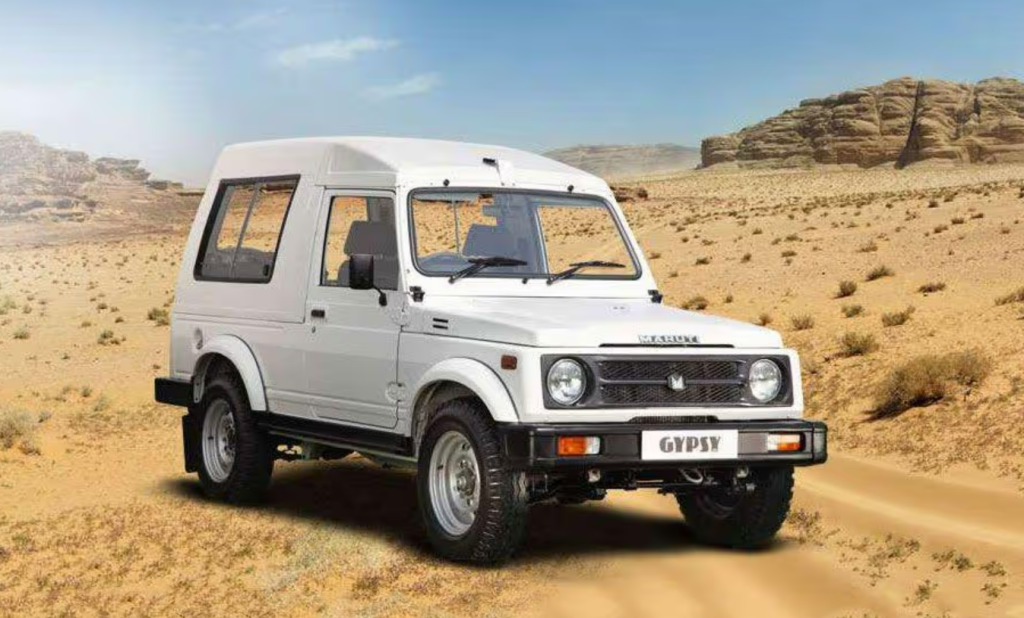
The Maruti Suzuki Gypsy King is more than just a vehicle—it’s an institution. Introduced in 1985 and later upgraded to the more powerful “King” variant, this rugged 4×4 became synonymous with adventure, resilience, and off-road supremacy. Whether tackling treacherous mountain trails or serving in the Indian Army, the Gypsy was built to conquer.
For Maruti Suzuki, the Gypsy marked its entry into the utility and lifestyle segment. Equipped with a 1.3L carbureted petrol engine, later upgraded to a 1.3L MPFI unit, it delivered exceptional performance with an unladen weight that made it nearly unstoppable on rough terrain. Its lightweight design and selectable 4WD system gave it unmatched agility, making it a favorite among rally drivers and defense forces alike.
Over its three-decade run, the Gypsy became the go-to choice for police units, forest departments, and motorsport enthusiasts. Though production ceased in 2019, its legacy remains unshaken. Today, it stands as a timeless symbol of endurance, earning its place among the Most Iconic Indian Cars Of All Time. Few vehicles have shaped India’s off-roading culture like the Gypsy, proving that true legends never fade—they just forge new trails.
Maruti Suzuki Omni: India’s Ultimate Utility Vehicle
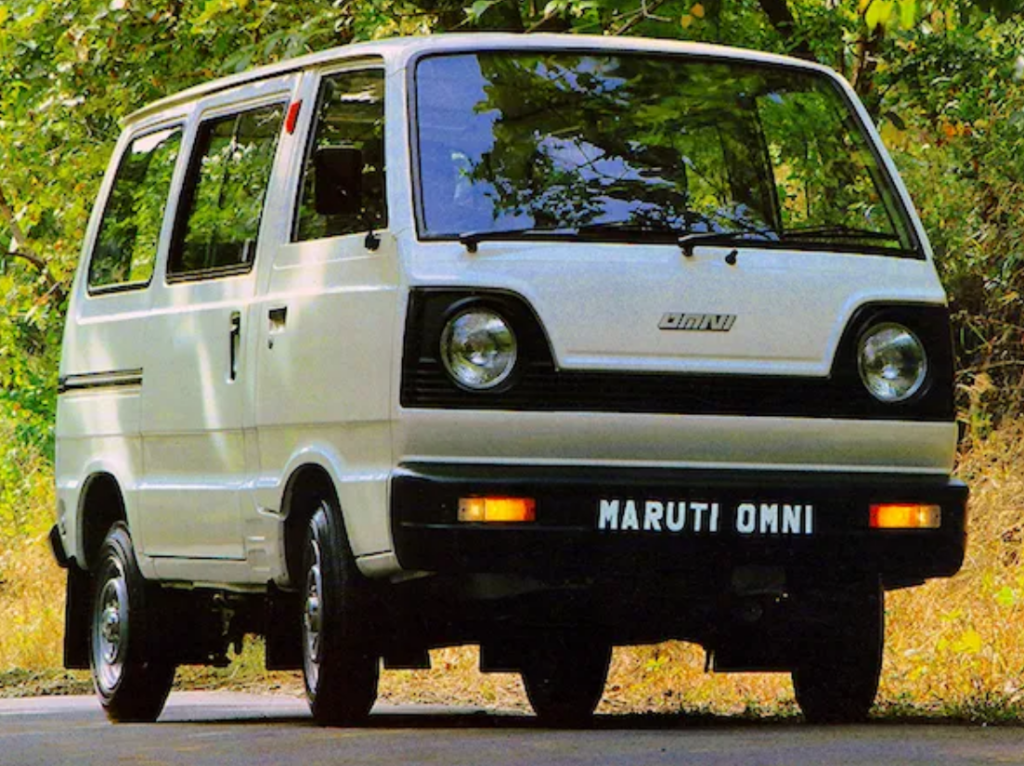
Few vehicles have achieved the versatility and cultural relevance of the Maruti Suzuki Omni. Launched in 1984 as India’s first microvan, it quickly became the backbone of family transport, commercial fleets, and even emergency services. With its boxy design, compact footprint, and cavernous interior, the Omni was a masterclass in practicality.
For Maruti Suzuki, the Omni was a turning point. It was the brand’s second vehicle in India, following the legendary 800, and it proved that a small van could serve countless roles. Powered by a 796cc petrol engine, the Omni wasn’t built for speed, but its efficiency and durability made it a trusted workhorse. Over a production run of 35 years, it sold over 2 million units, becoming a fixture on Indian roads.
From ferrying schoolchildren to being converted into ambulances, cargo vans, and even food trucks, the Omni’s adaptability was unmatched. It shaped India’s light commercial vehicle segment and cemented Maruti Suzuki’s dominance in the market. Despite its discontinuation in 2019 due to evolving safety norms, the Omni remains deeply embedded in India’s automotive legacy, securing its place among the Most Iconic Indian Cars Of All Time.
Hindustan Motors Contessa: India’s Muscle Car Dream
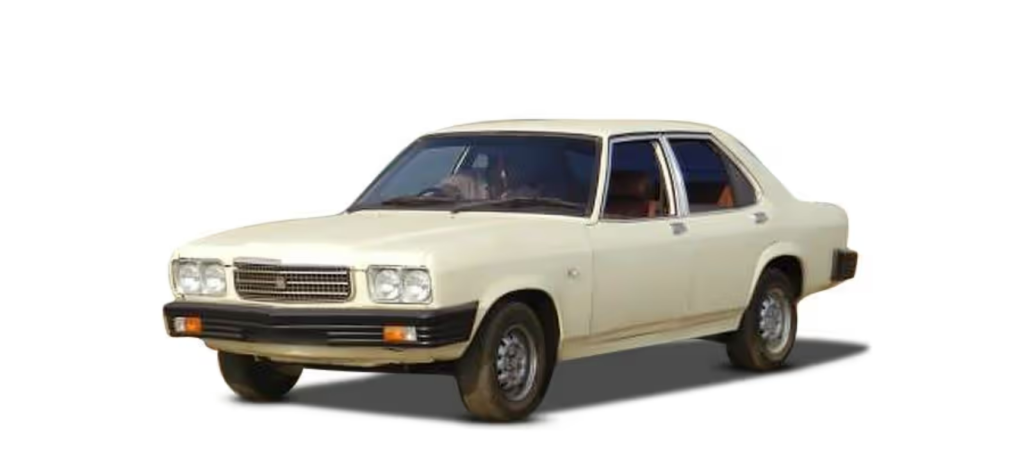
The Hindustan Motors Contessa wasn’t just a car; it was a statement. Launched in 1984, it was India’s first true luxury sedan, exuding an aura of prestige and power. With its long hood, broad stance, and plush interiors, the Contessa was often compared to American muscle cars, earning it a cult following. At a time when boxy, utilitarian vehicles ruled Indian roads, the Contessa offered something radically different—elegance, comfort, and a commanding presence.
Under the hood, it initially featured a 1.5L BMC petrol engine, later upgraded to a 1.8L Isuzu powertrain, making it one of the most powerful cars of its era in India. Government officials, business tycoons, and enthusiasts flocked to own one, solidifying its reputation as the car of the elite. Despite being a premium offering, Hindustan Motors struggled to keep up with evolving market demands and production ceased in 2002.
Though it disappeared from showrooms, the Contessa never left the hearts of enthusiasts. Today, it enjoys a second life in the hands of collectors and modifiers, embodying a bygone era of Indian motoring. Its legacy as a symbol of aspiration ensures its place among the Most Iconic Indian Cars Of All Time.
Maruti 800: The Car That Put India on Wheels
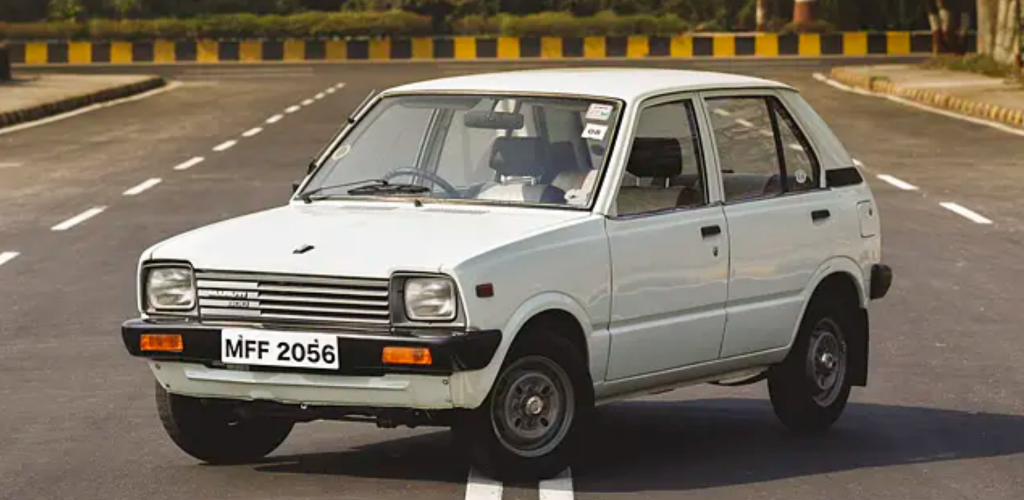
No car has revolutionized Indian motoring quite like the Maruti 800. Launched in 1983, this compact hatchback wasn’t just a mode of transport—it was a symbol of aspiration, affordability, and progress. At a time when owning a car was a luxury reserved for the elite, the Maruti 800 made personal mobility accessible to millions.
With its fuel-efficient 796cc three-cylinder engine, the Maruti 800 was peppy, reliable, and easy to maintain. It was the first car for countless Indian families, creating an emotional bond that still lingers today. Over its remarkable 31-year production run, more than 2.7 million units were sold, making it one of the best-selling cars in Indian history.
For Maruti Suzuki, this model wasn’t just a success—it was the foundation of its dominance in the Indian auto industry. It established Maruti as the go-to brand for value-driven, fuel-efficient vehicles, paving the way for future bestsellers. Even after its discontinuation in 2014, the Maruti 800’s legacy remains unmatched.
A true people’s car, it forever changed the Indian automotive landscape, securing its well-earned place among the Most Iconic Indian Cars Of All Time.
Premier Padmini: The Car That Defined an Era
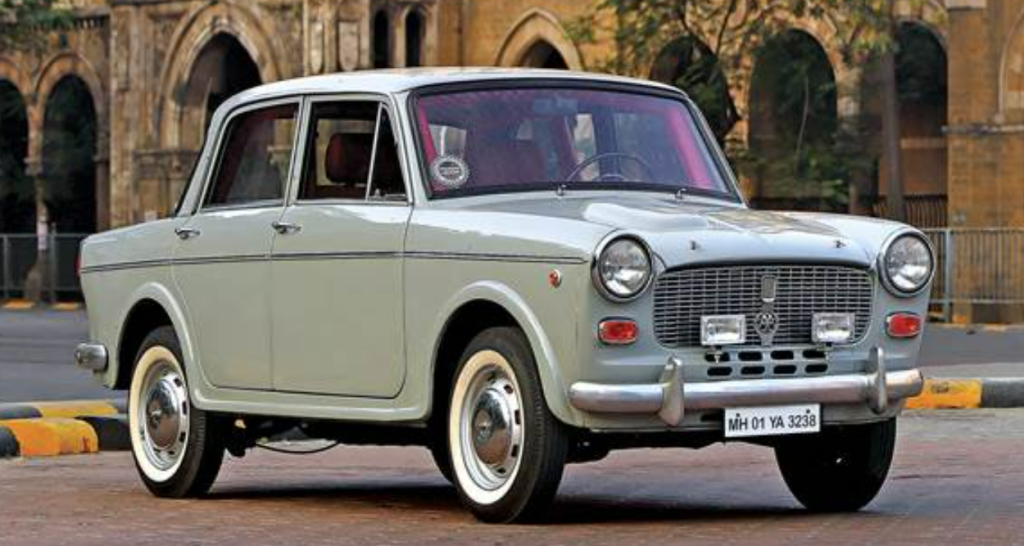
The Premier Padmini wasn’t just a car—it was a cultural icon. Launched in 1964 by Premier Automobiles Limited, this compact sedan became the face of urban India, particularly in Mumbai, where it ruled the streets as the city’s most beloved taxi for decades. Sleek yet practical, it combined European charm with Indian sensibilities, making it a preferred choice for families, professionals, and fleet operators alike.
Originally based on the Fiat 1100, the Padmini featured a 1.1L petrol engine producing 40 horsepower, modest by today’s standards but perfect for the traffic-laden roads of the time. Its plush seats, column-mounted gear shift, and smooth ride quality gave it an air of sophistication that made it a status symbol in the 1970s and 1980s. Bollywood stars, politicians, and business elites were often seen behind its wheel, further cementing its aspirational appeal.
Despite facing competition from newer models, the Padmini enjoyed an impressive production run of nearly four decades, before being discontinued in 2000. Even today, nostalgia keeps its legacy alive, securing its rightful place among the Most Iconic Indian Cars Of All Time—a timeless reminder of India’s golden automotive era.
Hindustan Motors Ambassador: The Grandfather of Indian Automobiles
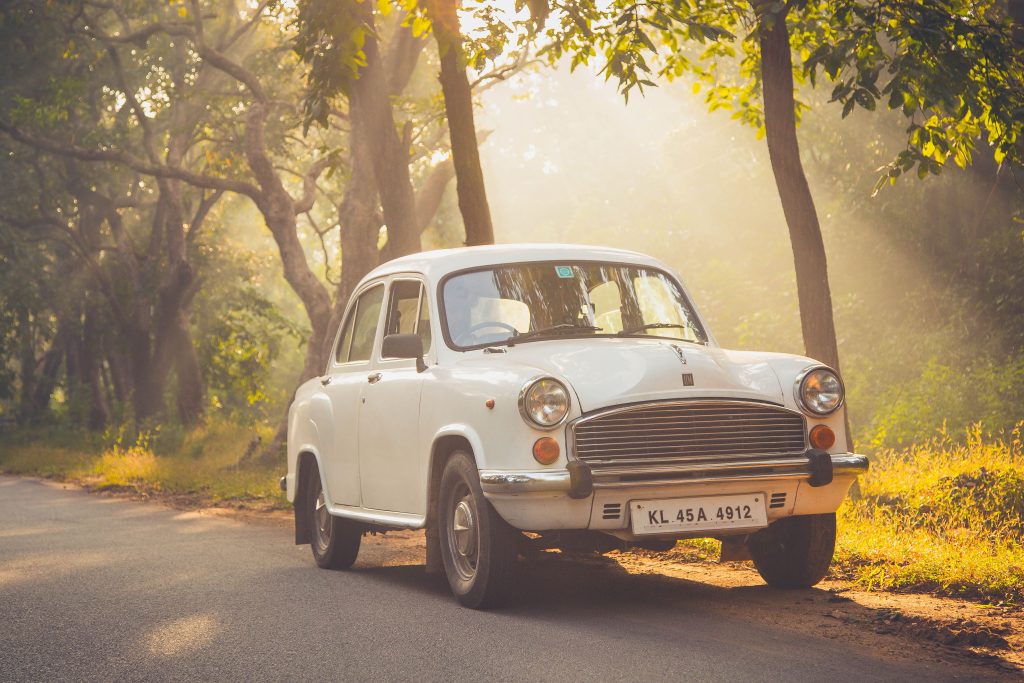
The Hindustan Motors Ambassador wasn’t just a car—it was a legacy on four wheels. Launched in 1957 and inspired by the British Morris Oxford, it became the preferred ride of politicians, bureaucrats, and the elite, earning the moniker “The King of Indian Roads.” With its bulbous design, plush interiors, and near-indestructible build, the Ambassador symbolized power, prestige, and durability.
For over five decades, this iconic sedan was the undisputed face of India’s automobile industry. Under its hood, various iterations housed engines ranging from a 1.5L petrol to a 2.0L diesel, ensuring it remained relevant across generations. Despite its old-school charm, it adapted over the years, even offering a fuel-injected version before production ceased in 2014.
Beyond its dominance in government fleets, the Ambassador found a second home as India’s most trusted taxi, particularly in Kolkata, where it became an inseparable part of the city’s identity. With over four million units sold, it was one of India’s longest-running car models.
Though its reign has ended, its nostalgia lives on, securing its place among the Most Iconic Indian Cars Of All Time—a timeless machine that once ruled Indian streets with undeniable authority.
Most Iconic India Cars of All Time
-
Tata Sumo – Named after Sumant Moolgaokar, a former Tata Motors MD, the Sumo was one of the first passenger vehicles entirely designed in India.
-
Tata Safari – The first Indian SUV to offer a luxury-oriented design with features like a reclining rear seat, making it a unique blend of ruggedness and comfort.
-
Maruti Suzuki Gypsy King – This lightweight 4×4 was so reliable that it served as the official vehicle for the Indian Army for over three decades and was extensively used in high-altitude, extreme terrains.
-
Maruti Suzuki Omni – Due to its compact yet spacious design, it became India’s most versatile van, used for everything from school transport to ambulances and even mobile shops.
-
Hindustan Motors Contessa – Often called “India’s Muscle Car,” it was actually a rebadged version of the Vauxhall Victor, a British luxury sedan.
-
Maruti 800 – The first unit of the Maruti 800 was handed over personally by Prime Minister Indira Gandhi in 1983 to its first owner, Harpal Singh, marking the beginning of India’s affordable car revolution.
-
Premier Padmini – The car became an unofficial Bollywood superstar, appearing in countless movies and being synonymous with Mumbai’s iconic black-and-yellow taxis.
-
Hindustan Motors Ambassador – In 2013, the Ambassador was declared the “Best Taxi in the World” by Top Gear, beating out modern taxis from global metropolises.
-
Mahindra Scorpio – The first SUV developed entirely in India, the Scorpio was a game-changer for Mahindra, launching them into the global market with exports to Europe, South Africa, and Latin America.
-
Tata Indica – It was India’s first fully indigenous passenger car, and within a year of its launch in 1998, it became the best-selling hatchback in the country, proving that Indian engineering could take on global giants.
